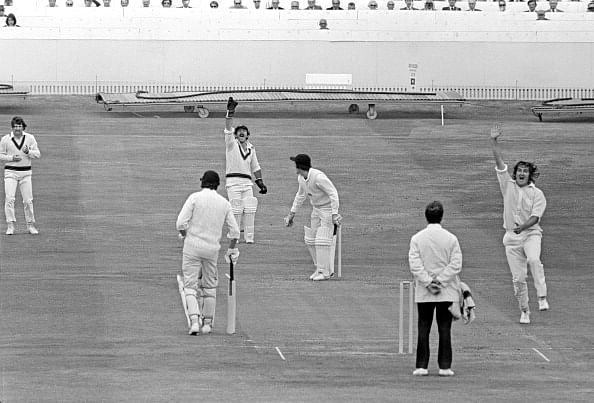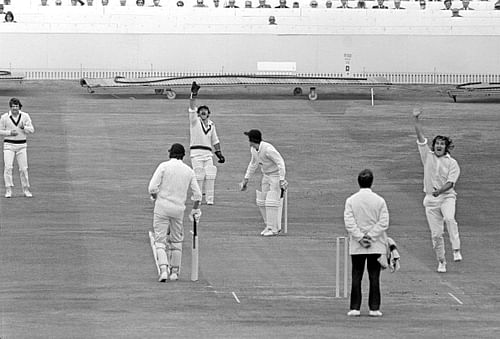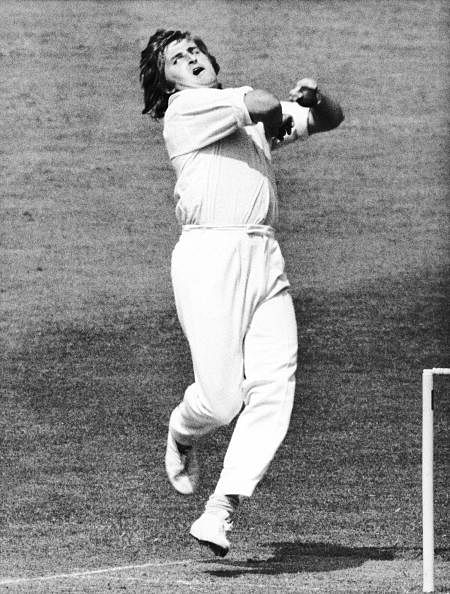
Most incredible matches in World Cup history: 3 - Australia vs England (1975)

All it takes is one man, one inspired performance, and your team sails to the shores of victory. It couldn’t have been a better setting for Australia – the old enemy, England, stood between them and a place in the summit clash of the first-ever World Cup tournament. The bowling, too, was evenly matched – the likes of Dennis Lillee and Jeff Thomson squared off against the might of John Snow and Chris Old.
But on 18th June, 1975, a rookie cricketer would rise above all of them to not only cement a place in the final for his side, but also give the game a new superstar. If the Ashes encounters of 1981 were deemed to be Botham’s Ashes, the first semifinal of the maiden edition, of what was to become cricket’s quadrennial showpiece, would forever be anointed as Gilmour’s Game – after Gary Gilmour, the long-haired successor to yet another Aussie bowling great Alan Davidson.
Prior to this match, the 23-year-old left-arm seamer had played in only two ODIs in his short career. The third of them, however, proved to be his zenith as a cricketer, perhaps the finest hour of his eventual journey into the game of flannel whites. Typically, because the limited-overs format was still in its infancy, most teams preferred to play it in the same way as Test cricket, something that would eventually be redefined in the years to come.
The semifinal was played out at Headingley, a pitch which would later be criticised by both Ian Chappell and his counterpart Mike Denness. Ideally, the home team should have had an advantage since they knew the playing conditions inside out. But the Australians would have licked their lips at the sight of the strip on offer – they had secured a fine win over Pakistan at the same venue 10 days prior to the penultimate clash.
However, the groundsmen had subsequently watered the track, leaving it green and damp, so the question of the decision on winning the toss became moot. As it turned out, it would be the right choice made by Chappelli.
Lillee-Thomson pair splits, Gilmour rattles the opposition

For once, the Aussie skipper decided not to unleash the fearsome pace duo of Lillee and Thommo on the English. Instead, he brought the New South Wales southpaw quick on early, getting him to bowl downhill instead of the Kirkstall Lane End. The conditions were more suited to Gilmour’s style – he was a master of swing, and on that day, had everything going for him in terms of low clouds, a stiff breeze and a lively track.
England’s openers Dennis Amiss – whose magnificent 137 had set up a crushing victory over India in the early stages of the tournament – and Barry Wood prepared to receive the barrage.
Very quickly, it became clear just why the toss was so important in a game of this magnitude. Gus (as Gilmour was fondly called) began the demolition job almost as soon as he came on. In-swinger after in-swinger cascaded from his hand as the Poms went into a staggering collapse; Amiss was trapped in front while Wood was castled.
The likes of Keith Fletcher and Frank Hayes also fell to superb deliveries; in particular, the latter was deceived by one that nipped back alarmingly to catch him plumb in front of the wicket.
But the Ball of the Day came when Tony Greig was on strike – a quick delivery swinging away prompted him to push at it, only to see Rod Marsh pull off a spectacular one-handed diving catch behind the stumps. The big fish was nailed, and Australia had their tails up.
Wicket-keeper Alan Knott also fell cheaply, and in his first nine overs, Gilmour had taken 6/10. He finished with a match haul of 6/14, with England skittled out for a paltry 93 – only Denness and tail-ender Geoff Arnold managed to post double-figure scores. Advantage Australia? Everyone thought so!
The Old-Snow partnership rattles the Kangaroos
The pitch still had a lot of sideways movement and very uneven bounce. So it was only natural that England looked to exploit the same advantage that the Kangaroos exerted over them in the first innings.
While Arnold bowled well within his limits, picking up the wicket of Alan Turner, he could only send down 7.4 overs of his allotted 12. It was then that Denness turned to Chris Old and John Snow for assistance, and both responded with performances worthy of a World Cup semifinal.
The Chappell brothers had added only seven runs to the total when Snow trapped Ian lbw, followed by a similar dismissal of Greg with the score on 32. Old then took out Rick McCosker, Ross Edwards and Marsh, leaving the Aussies reeling at 39/6. The crowds began to smell an English victory in the fluctuating Yorkshire weather.
Little did they know that Gus would soon decimate them with another of his weapons: the blade.
Glamourous Gilmour hitting hastens victory
Joining Doug Walters at the crease, Gary began unfurling his shots from the word go. In simple terms, he went berserk, smashing five boundaries in a 44-minute innings that breathed life back into the chase.
None of his shots lacked timing or power – they were, in fact, quite graceful to behold by those in the stands that day. He rescued the side from a perilous position, and coming back into a must-win match when all looked over exemplified the galvanising approach of the young all-rounder.
Australia ended up cantering to victory by a mere four wickets, but what especially touched those in the stands that day was the standing ovation granted by the partisan English crowd to the young NSW cricketer’s heroics.
True to form, former West Indies captain Jeff Stollmeyer quickly named Gilmour man-of-the-match for his all-round effort. He would go on to take another five-wicket haul against Clive Lloyd’s side in the final, but never played much cricket afterwards. A debilitating foot injury and a very casual approach to fitness and training ensured that the second Alan Davidson of Australian cricket would be unable to serve his nation any further merely two years after the World Cup final.
Gilmour deserves more than a footnote in the annals of cricketing history, for he gave Australia’s campaign some life, and may have influenced, in part, the successors to his teammates with their steely style of play in big matches. Adios Gus, and thanks for all the legendary memories.